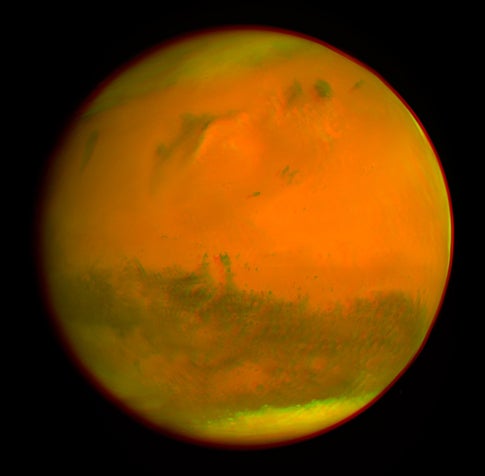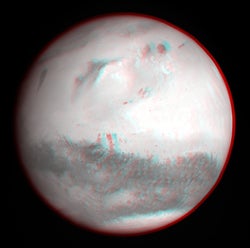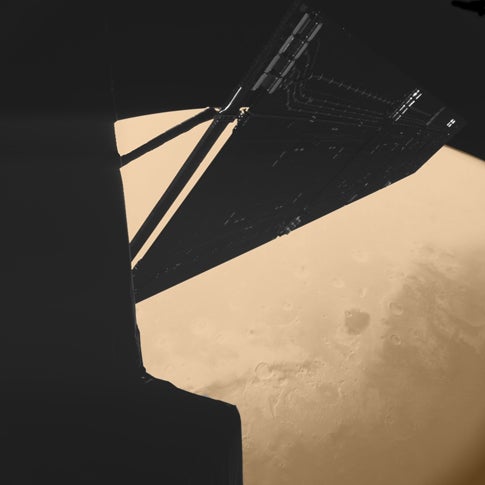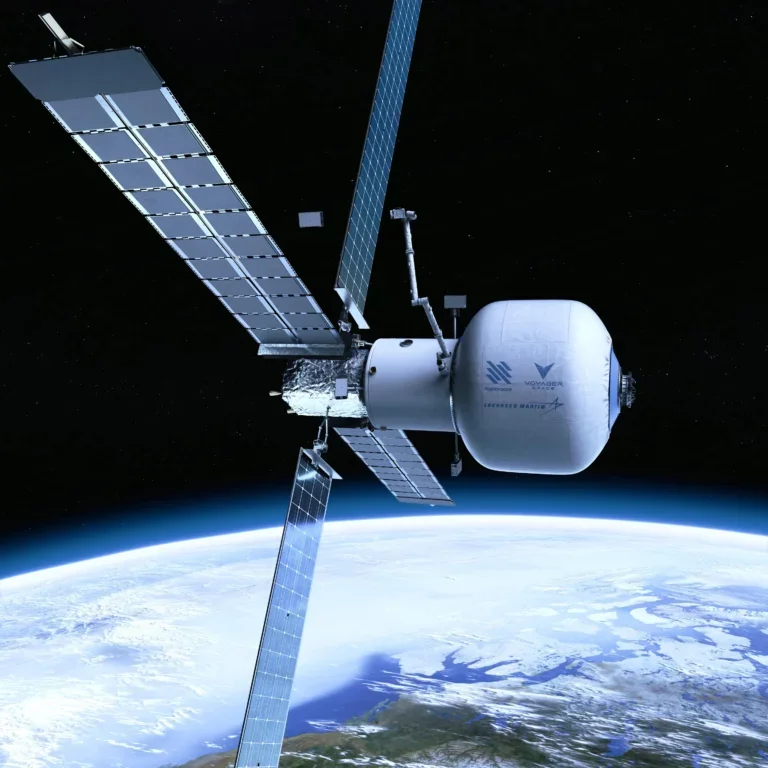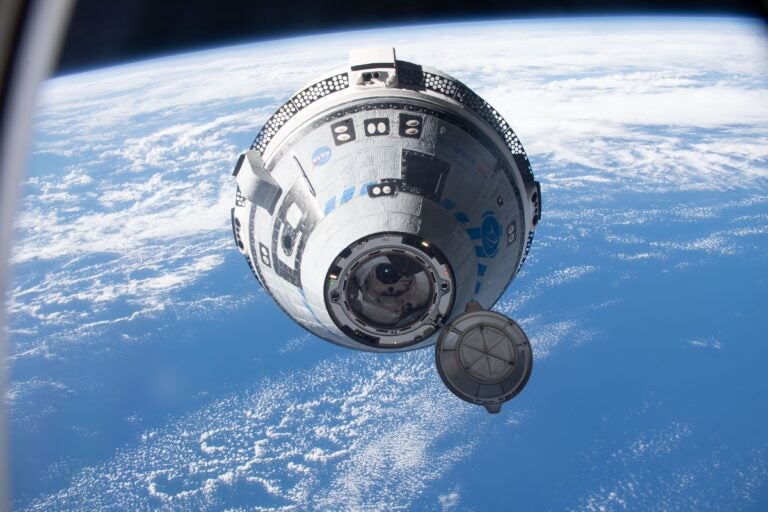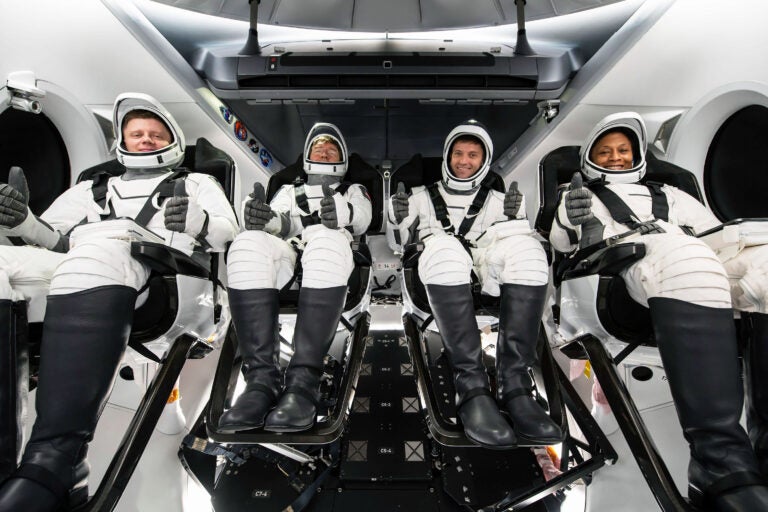February 27, 2007
At 3:57 A.M. CST Sunday, mission controllers at ESOC, ESA’s Space Operations Center in Germany, confirmed Rosetta’s successful swingby of Mars, a key milestone in the 4.4-billion mile (7.1-billion kilometer) journey of this unique spacecraft to its target comet, 67P Churyumov-Gerasimenko, in 2014.
At 3:57 A.M. CST Sunday, mission controllers at ESOC, ESA’s Space Operations Center in Germany, confirmed Rosetta’s successful swingby of Mars, a key milestone in the 4.4-billion mile (7.1-billion kilometer) journey of this unique spacecraft to its target comet, 67P Churyumov-Gerasimenko, in 2014.
This 3-D image clearly shows the spherical shape of Mars. (To see the 3-D effect, use a pair of left-eye red, right-eye blue color glasses.) Although Rosetta’s direction relative to Mars was relatively constant during the approach, the surface view changed due to rotation. This made possible the production of an anaglyph, or stereoscopic image, by combining images taken by OSIRIS at different times.
ESA
The closest approach took place at 3:15 A.M. CET, at a distance of 250 kilometers from the surface. The gravitational energy of Mars helped Rosetta change direction, while the spacecraft was decelerated with respect to the Sun by an estimated 7,887 kilometers per hour. The spacecraft is now on the correct track towards Earth — the next destination planet whose gravitational energy Rosetta will exploit in November this year to gain acceleration and continue on its trek.
Amazing images around the closest approach were returned by the Rosetta orbiter camera (OSIRIS) and by the Philae lander imaging system (CIVA).
This stunning view, with portions of the Rosetta spacecraft in the foreground, was taken by the Rosetta Lander Imaging System (CIVA) aboard Rosetta’s Philae Lander, just 4 minutes before the spacecraft reached its closest approach to Mars early Sunday morning.
ESA

